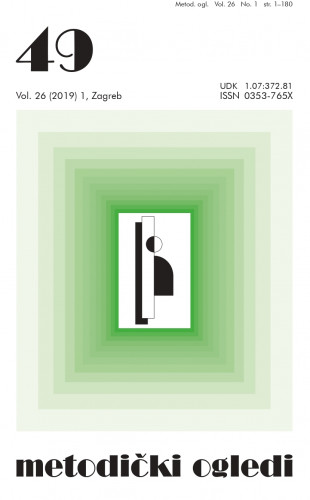U suvremenom svijetu muzeji kao kulturne institucije pedagoškom djelatnošću kontinuirano nastoje privući pozornost odgojno-obrazovnih institucija. U teorijskom dijelu rada stavljen je naglasak na muzej i njegovu odgojno-obrazovnu ulogu, pri čemu se opisuju ključni elementi i glavne karakteristike koje obilježavaju učenje u muzeju. U empirijskom dijelu rada predstavljeni su rezultati istraživanja koji donose mišljenja i stavove studenata društvenih i prirodnih znanosti o posjećivanju muzeja, provedbi nastave Likovne kulture u muzejskim prostorima te o muzeju kao prostoru neformalnog učenja. Ovim istraživanjem obuhvaćeni su studenti na smjerovima Učiteljski studij te Rani i predškolski odgoj i obrazovanje na Filozofskom fakultetu u Splitu, kao i studenti Ekonomskog fakulteta, Prirodoslovno matematičkog fakulteta te Medicinskog fakulteta u Splitu. U istraživanju je sudjelovalo 158 studenata: 52 studenta prirodnih znanosti i 106 s područja društvenih znanosti; 147 ispitanika bile su žene, a 11 muškarci. Rezultati su pokazali da se studenti prirodnih i društvenih znanosti ne razlikuju po svojim stavovima o muzejima odnosno studenti se u velikom broju slažu s tvrdnjama koje izražavaju pozitivne stavove o učenju u muzejskim prostorima.; In the modern world, museums as cultural institutions are constantly striving to attract the attention of educational institutions with their pedagogical activities. The theoretical part of the paper emphasizes the educational role of museums, describing the key elements and the main characteristics of learning in the museum. In the empirical part of the paper, we present the results of the research that show the attitudes of students from both social and natural sciences towards visiting museums, on the teaching of art science in the museum, and on the use of museums as an area for informal learning. The study was conducted among students of the Teacher Education and Pre-School Education at the Faculty of Humanities and Social Sciences, University of Split, students at the Faculty of Economics, Faculty of Natural Sciences and Mathematics and students of the Faculty of Medicine, University of Split. A total of 158 students were included: 52 students of natural sciences and 106 from the field of social sciences. Of the total number of students, 147 were women, and 11 were men. The results showed that students of social and natural sciences have the same attitudes, i.e., both groups mostly agree with the claims which express positive attitudes about the importance of museum as good learning environment.
Sažetak

 Metodički ogledi : 26,1(2019) / glavna i odgovorna urednica, editor-in-chief Ivana Zagorac.
Metodički ogledi : 26,1(2019) / glavna i odgovorna urednica, editor-in-chief Ivana Zagorac.